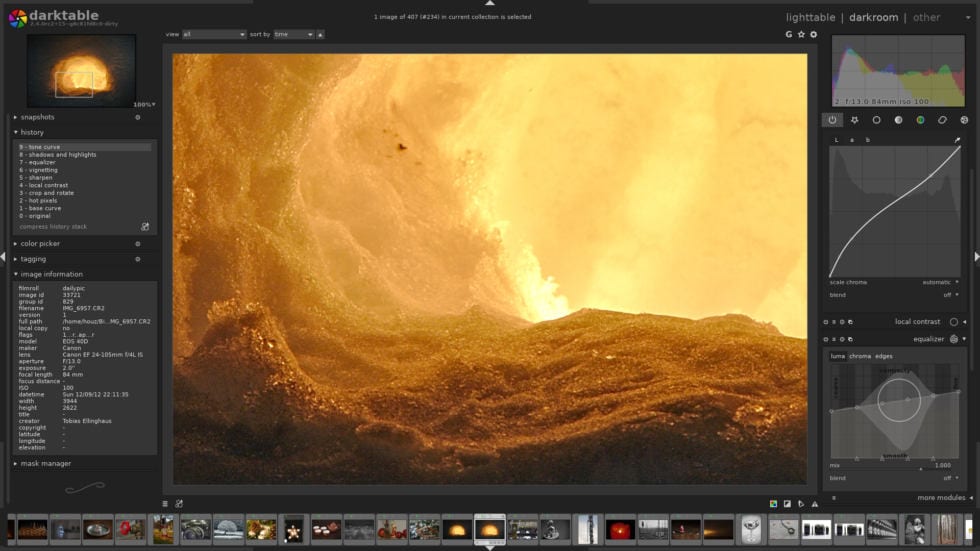
The scene-referred workflow simply aims at remapping some arbitrary scene luminances to what will appear white or black on the output medium. In fact, white and black mean nothing with regard to the original scene, which is only a collection of luminances at varying intensities. This would mean they have no light at all, and the existence of zero light breaks many physically-accurate algorithms. This requires a more complex user interface.Īlso, because scene-referred values are supposed to be physically-meaningful, pixels cannot have zero intensity. However, scene-referred pipelines lose the convenient fixed values of white, middle-gray and black which characterised display-referred pipelines, and setting these values, according to the scene and to the conditions of shooting, now becomes the responsibility of the user.


This means that the RGB values of the pixels are kept proportional to the intensity of the light emission recorded by the camera on the scene, enabling accurate alpha compositing and optical filter emulations, while also scaling to any dynamic range through the same algorithm (SDR as well as HDR). In scene-referred workflow, pixels are prepared for display only at the last stage of the pipeline, in the display transform. These possibilities enable what we call a “scene-referred” workflow, in which pixels can retain their original radiometric relationships along almost the entire processing pipe. Modern computers are not tied to the same computational limitations as those from the 1990s, and can work on pixels whose values are completely unbounded (from 0 up to +infinity) and encoded as real numbers (using floating point formats). They also don’t scale well to HDR images, which led to the development of many questionable local and global tonemapping methods and the infamous 2010s “HDR look”. Hue and saturation change in unpredictable ways, and value relationships between neighbouring pixels are dilated or compressed such that gradients are also altered unpredictably.ĭisplay-referred pipelines therefore break optical filters (lens blurring or deblurring), alpha compositing (which relies on optical and geometrical definitions of occlusion), colors and gradients (local relationships between chrominance and luminance of pixels). Unfortunately the non-linear scaling, which is mandatory to make the integer encoding work, breaks the natural relationships between pixel values. For example, the overlay blending mode expects a middle-gray encoded at 50% (or 128 in integer encoding).

Most of the image-processing algorithms used in these workflows have been tuned around these assumptions. They rely on the assumption that the image has been prepared for display at an early stage in the processing pipeline, and embed hard-coded assumptions about the RGB values of black, middle-gray and white. These workflows, using bounded RGB representations and possibly non-linear transforms to encode RGB signals, are called “display-referred”. Anything outside of this range overflows and is clipped to the nearest bound. The 8 bit integer formats are also technically limited to the 0-255 range. However, due to the use of an integer format (which implies rounding errors) they had to apply a “gamma” (essentially a transfer function applying a power 1/2.2 or 1/2.4 to encode the RGB values) and increase the bit-depth in the low-lights in order to reduce rounding errors there (humans are very sensitive to low-light details). These applications processed images encoded with 8 bit unsigned integers because it was more memory- and computationally-efficient. The core operates completely on floating point values, so darktable can not only be used for photography but also for scientifically acquired images or output of renderers (high dynamic range).Most image processing applications come from the 1990s and/or inherit a 1990s workflow. The frontend is written in gtk+/cairo, the database uses sqlite3, raw image loading is done using rawspeed, high-dynamic range, and standard image formats such as jpeg are also supported.
#DARKTABLE 2 FULL#
the full image is only converted during export. the user will always be able to interact, even if the full resolution image is not yet loaded.Īll editing is fully non-destructive and only operates on cached image buffers for display. The user interface is built around efficient caching of image metadata and mipmaps, all stored in a database.
#DARKTABLE 2 FREE#
It tries to fill the gap between the many excellent existing free raw converters and image management tools (such as ufraw or f-spot). it also enables you to develop raw images and enhance them. Darktable manages your digital negatives in a database and lets you view them through a zoomable lighttable.


 0 kommentar(er)
0 kommentar(er)
